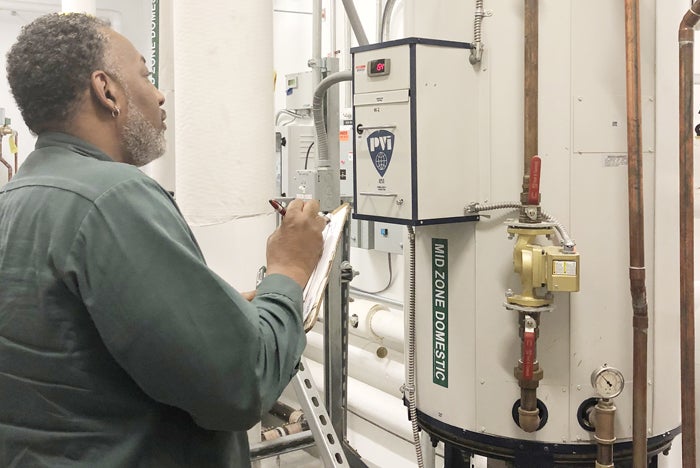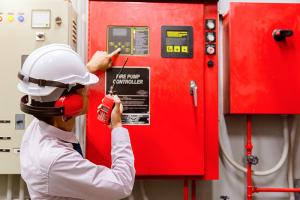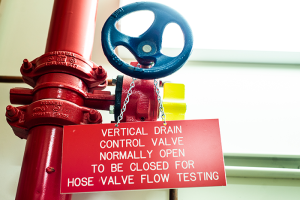Taking a team approach to improving water safety

From left: Jon Sege, environment of care compliance specialist; Girlie Manatad, manager of environment of care compliance; and Denise Richards, environment of care compliance specialist, stand in front of screens showing water-testing results.
Photo courtesy of NewYork-Presbyterian Hospital
Health facility professionals at NewYork-Presbyterian Hospital (NYPH) learned a lot about forming multifunctional teams and putting them into action during its water-quality initiative. Here are some tips they picked up:
- Get buy-in from hospital leaders and administrators.
- Select key players from across departments, including facilities operations and engineering (these team members should oversee all mechanical aspects of the building including, but not limited to, operation and maintenance of the systems, as well as program validation and program-record maintenance); infection prevention and control (these personnel should help manage all program validation including, but not limited to, a review of any Legionellosis event associated with the facility); and environment of care (these staff members should supervise process review and improvement and provide dedicated resources to design and steer the program).
- Develop a blueprint, establish goals for the program and present them to leadership.
- After approval by leadership, plan for efficient program rollout in a timely manner.
- Once data start coming in and the results are clearer, it will be easier to finalize and enhance the program.
“Having a multifunctional, multidisciplinary water-safety team enables the program to be reviewed simultaneously by an individual or group in order to target key opportunities for improvement and understand high-level program metrics,” says Girlie Manatad, M.D., MPH, CHSP, manager of environment of care compliance at NYPH. “This way, potential root causes are more rapidly identified and out-of-range measures can be addressed before any detrimental impact on water quality and patient and staff safety can occur.”
For the program to function correctly, however, “every team member should provide the necessary resources and staff to implement and execute the program on a regular basis,” she says. The good news is that a water safety-management program doesn’t require any full-time dedication by its team members. “The efficiency achieved by the program will recoup the time necessary to implement it,” Manatad adds.





